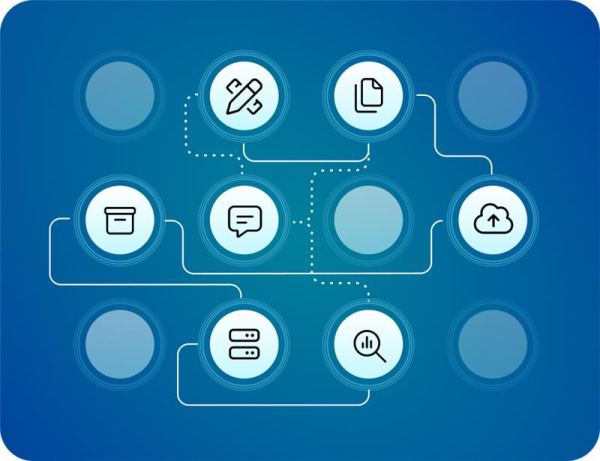Data migration
Develop a data map and test migration routine to understand legacy data and ensure successful transition.
A guide to a seamless migration journey
If you ask business leaders what makes them pause when it comes to technology, the answer is often data migration.
When you switch from existing systems to new ones, you don't just move records
from one system to another. It’s about keeping the business running, preparing for
what's next, and effectively utilising the information you have.
At Circini, we’ve spent decades navigating migrations across many sectors including banking, utilities, NGOs, healthcare, education, and government. Our approach blends structure with flexibility, so you can move forward with clarity and confidence.
What and Why: Beyond Technology
Migration is more than moving records from one place to another. It’s a chance to:
-
Align with modern, strategic platforms.
-
Improve data quality and governance.
-
Build leadership confidence through transparency and reliability.
Our work always starts with the questions leaders ask most: How much? How long? How complex? We scope the migration early, using our methodology to define requirements, constraints, and the inventory of entities that need to move.

Aim and Range
Every programme has different goals:
-
Faster speed to market?
-
Lower business costs?
-
Better reporting and decision-making?
We help organisations define their scope clearly, so that goals turn into measurable outcomes. That means understanding both the current state: systems being replaced, upgraded, or interfaced; and the future state design, whether you’re moving gradually or making a clean cut.
How to Move
There’s no one-size-fits-all migration. Some projects require a step-by-step transition; others need a sharper cutover. Whatever the path, working with Circini ensures the right mix of planning, governance, and execution.
A Smarter Transition, Not Just a Move
Migration is also the opportunity to tidy your data. Simply transferring disorganised data provides little long-term value. A migration should be viewed as a strategic opportunity to refine and structure information. By applying clear standards, you not only ensure a smooth transition but also enhance data quality, creating assets that are aligned with, and actively support your business objectives.
By applying stricter standards and cleansing, you don’t just shift data, you refine it. That means:
-
Cleaner, more reliable insights.
-
Stronger compliance and governance.
-
Greater confidence in leadership decisions.
Handled correctly, migration isn’t an interruption. It’s a transformation that helps organisations across New Zealand and Australia evolve into stronger, future-ready businesses.
Ready to talk migration? Contact Us